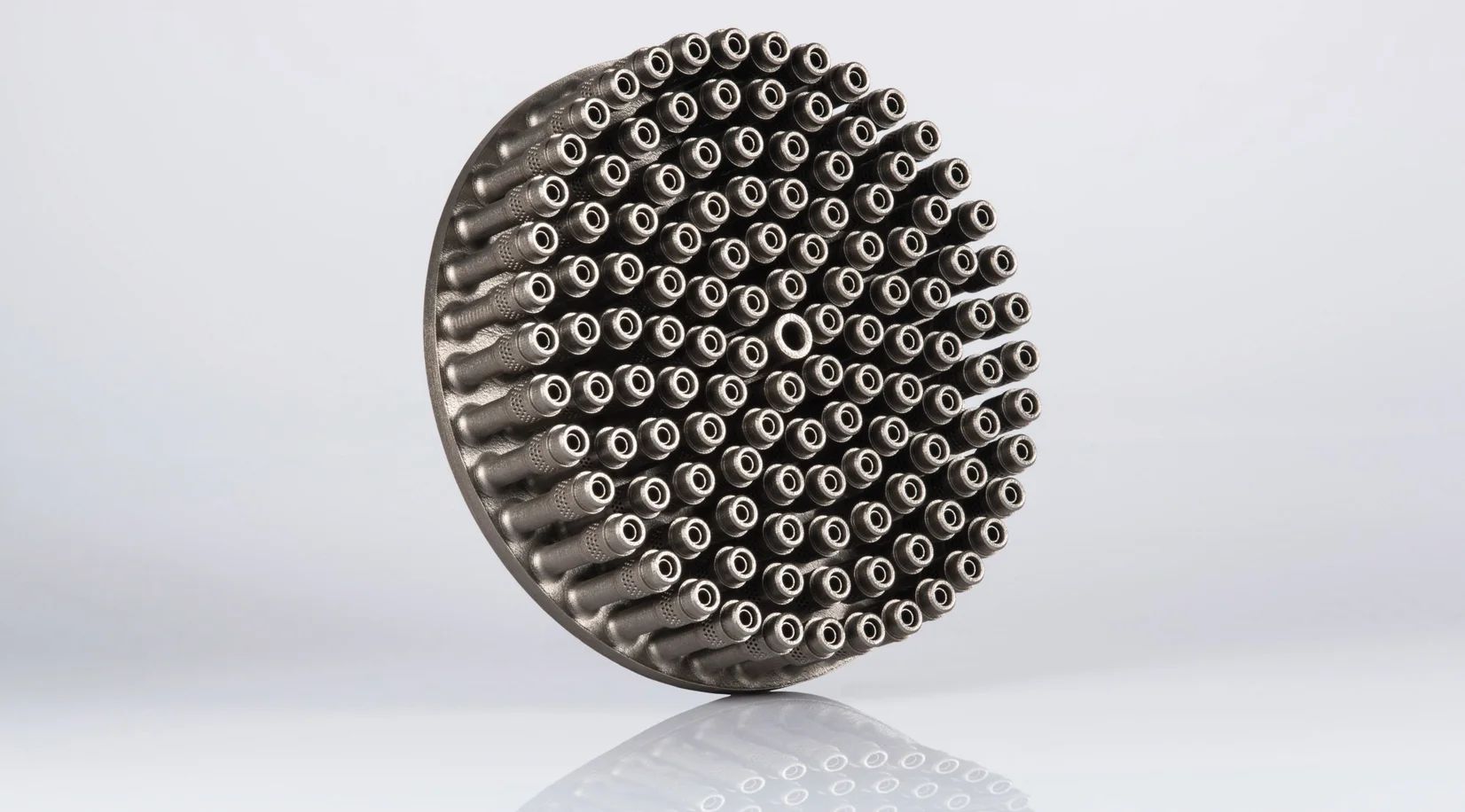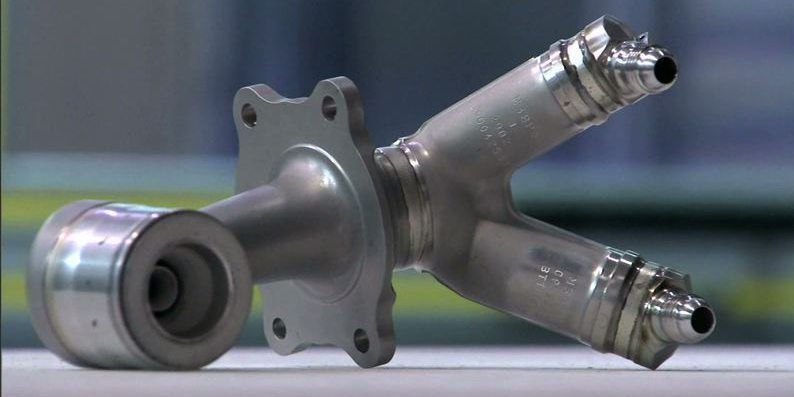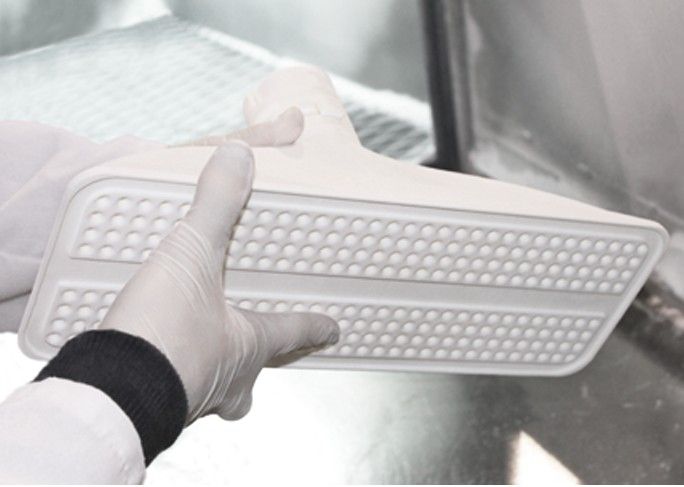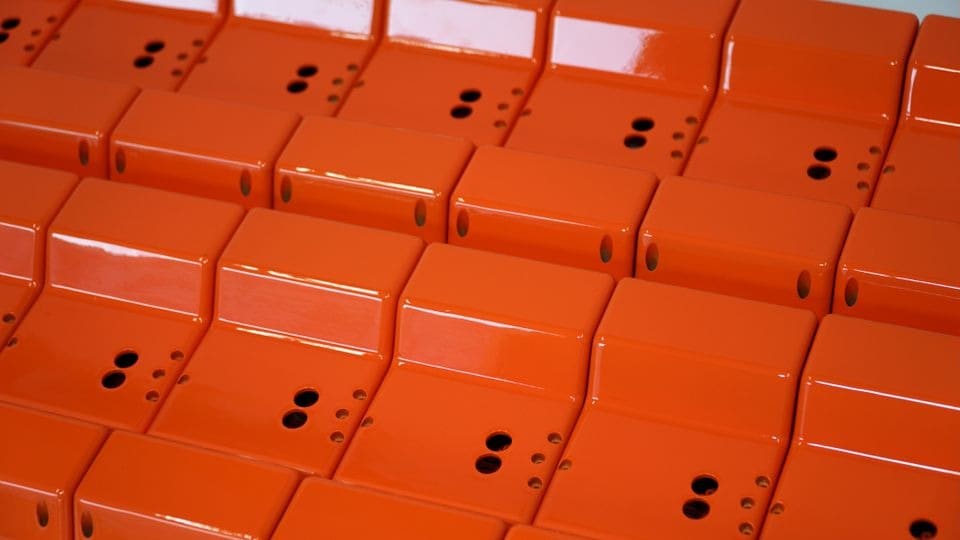A Future Without Assembly: Manufacturing Innovation Driven by 3D Printing and DfAM
AUTHOR: Creallo Marketing Team|2025.08.04
The once-taken-for-granted process of “assembly” in manufacturing is now reaching a turning point. As additive manufacturing—commonly known as 3D printing—advances, the paradigm of design and production itself is undergoing a profound transformation.
DfAM (Design for Additive Manufacturing) is at the core of this shift, redefining the traditional “manufacture-then-assemble” process from the ground up.
DFM vs. DfAM: A Shift in Design Thinking Based on Manufacturing Methods
Traditional DFM (Design for Manufacturing) emphasizes productivity and cost efficiency, designing parts for conventional manufacturing and assembly. In contrast, DfAM leverages the design freedom enabled by 3D printing to create complex and customized parts with enhanced functionality.
Key Features of DFM
• Designs tailored to molding, machining, and assembly processes
• Focus on part simplification and standardization
• Prioritizes ease of assembly and cost reduction
Key Features of DfAM
• Enables complex internal structures, lattices, and customized geometries
• Facilitates part consolidation and lightweighting
• Eliminates assembly steps and focuses on performance optimization
The Core of DfAM: Assembly Consolidation
One of the most powerful strategies of DfAM is assembly consolidation, which integrates multiple parts into a single, unified component—eliminating the need for assembly altogether.
Below are successful real-world examples from industries leveraging SLS, SLA, and metal 3D printing(SLM) technologies to achieve assembly-free design:
Aerospace & Defense – Fewer Parts, Lighter Components
• ArianeGroup Rocket Engine Injector Head
ArianeGroup reduced the 248-part rocket engine injector head into a single monolithic component using EOS SLS 3D printing. DfAM enabled intricate internal channels that were impossible to machine conventionally, improving weight, strength, and lead time while eliminating assembly and inspection steps. (Reference: 3D printing for Ariane 6 propulsion module < EOS GmbH | EOS GmbH)

• GE Aerospace ATP Engine
GE consolidated 855 components into just 12 parts in its ATP engine using metal additive manufacturing (DMLM/SLM), reducing weight by about 5%. A notable example is the fuel nozzle, where 20 parts were combined into one—improving weight, maintenance, and reliability.
(Reference: Insights into how GE is using Additive Manufacturing from their Additive Technologies Leader - 3D Printing Industry)

• Airbus A350 Door Shaft
Using EOS SLS 3D printing and DfAM, Airbus redesigned a 10-part door shaft into a single printed component. This reduced weight by 45%, cut costs by 25%, and optimized the assembly line. Each A350 aircraft now saves over 4kg per door thanks to this change. (Reference: 3D Printing in Aerospace | EOS | EOS GmbH)
Robotics & Automation – Lightweight, Integrated Structures
• Anubis 3D EOAT
Anubis 3D used DfAM to create a custom EOAT using SLS 3D Printing that combined both metal and plastic elements into a single print. The complex internal channels and hole patterns enhanced vacuum performance. The part weighs under 500g, achieving up to 70% weight reduction, and is ready for use without assembly. (Reference: 3D-Printed End-of-Arm for Smarter Packaging | EOS GmbH | EOS GmbH)

Heat Exchangers & Specialty Parts – Integrated Functionality & Internal Optimization
• Conflux Technology Heat Exchanger
Heat exchangers are a flagship use case of DfAM. Conflux’s design consolidated four components into one, reducing weight while improving thermal performance by 3x. Internal optimization also shortened part length by 55mm and weight by 22%. (Reference: Conflux: Wärmetauscher aus additiver Fertigung | EOS GmbH | EOS GmbH)

DfAM Design Principles & Practical Tips
- Design freedom for additive: Overcome traditional machining limits with function-first designs.
- Use of lattice and fluid channels: Optimize weight and strength simultaneously.
- Mass customization: Adaptable to both low-volume and high-volume production.
- Simplified supply chain: Reduce lead time and cost by minimizing assembly and logistics.
Manufacturing Innovation Powered by DfAM and 3D Printing
SLS, SLA, and metal 3D printing technologies—when paired with DfAM—are turning part consolidation, lightweighting, and customized mass production into reality. Global leaders are already applying these strategies, and assembly-free design is emerging as a competitive advantage.
Now is the time to prepare for the future of “assembly-free manufacturing.”
Creallo is ready to lead the way with you.
DfAM FAQ
Q1. What is DfAM?
DfAM (Design for Additive Manufacturing) is a design approach optimized for additive manufacturing methods such as 3D printing. It overcomes the limitations of traditional manufacturing by enabling part consolidation, lightweight structures, complex geometries, and improved production efficiency.
Q2. What are the benefits of applying DfAM in 3D printing?
DfAM is a design strategy that maximizes the strengths of additive manufacturing while minimizing its limitations.
Key benefits include:
- Reduced printing failures – Optimized orientation, support strategy, and layer settings
- Faster printing – Lattice structures, thickness optimization, and support reduction
- Highly complex geometries – Shape freedom impossible with traditional manufacturing
- Lightweight yet strong components – Topology optimization and lattice structures
- Fewer support structures – Lower material usage and shorter printing/post-processing time
- Reduced post-processing – Improved print quality through design-stage optimization
- Part consolidation – Integrating multiple components into a single, stronger part
- Higher production scalability – Efficient build stacking with SLS, DMLS, and other systems
- Overall cost optimization – Reduced material, time, and post-processing costs
Q3. How does DfAM help reduce manufacturing costs?
Studies show that up to 86% of the cost of an AM part is determined at the design stage, highlighting the importance of optimized design. DfAM significantly lowers part cost by eliminating unnecessary material usage, processes, and manual labor.
Main cost-saving effects include:
- Material reduction: Optimized geometry lowers print time and material consumption
- Labor savings: Designs that reduce assembly and post-processing
- Avoiding rework: Printer- and material-specific design alignment greatly reduces print failures
